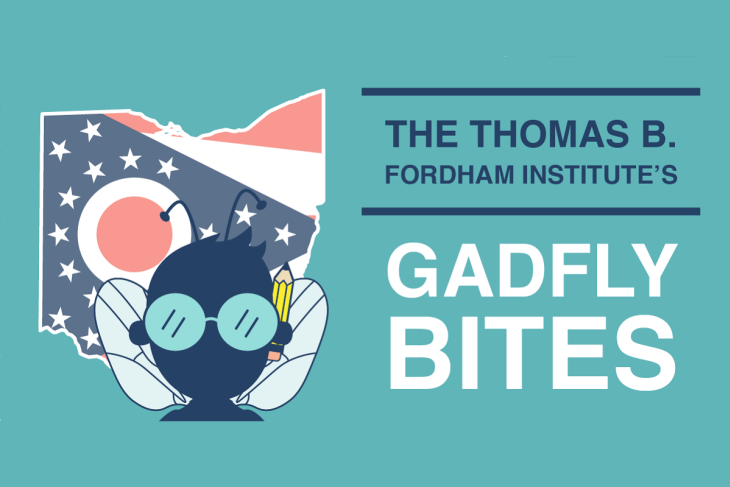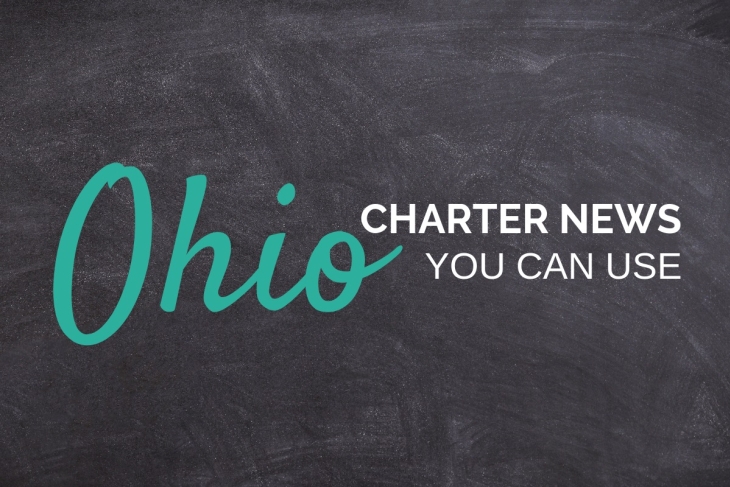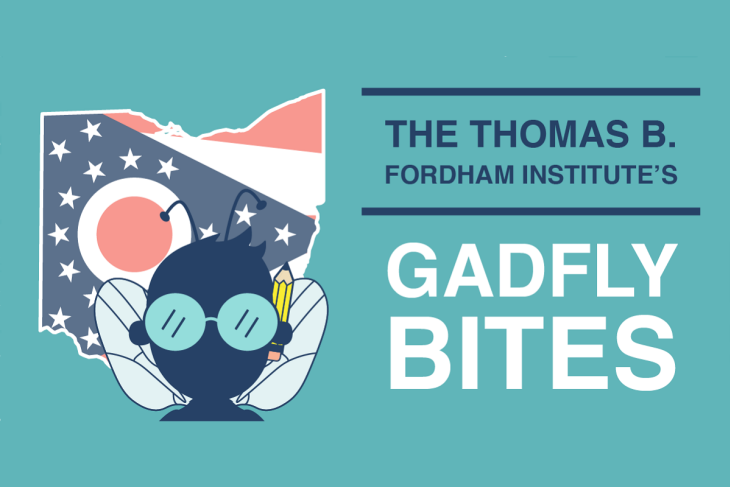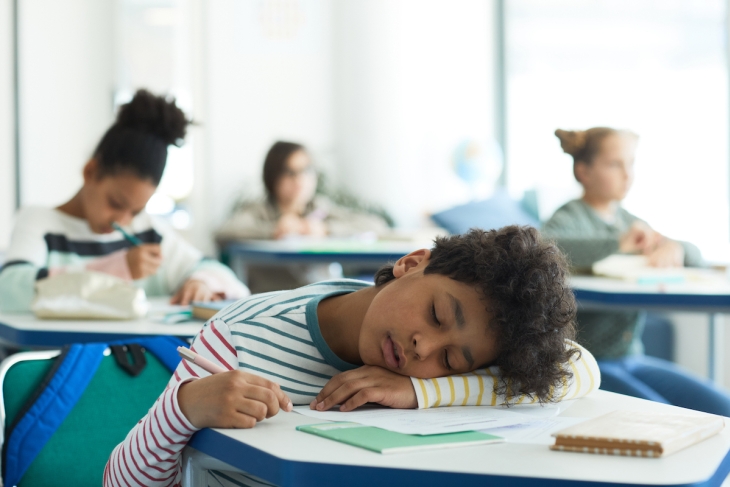A few years ago, in the midst of debates over academic distress commissions (ADCs), Governor DeWine said “The state has a moral obligation to help intervene on behalf of students stuck in failing schools.” That was true then, and is still true today. Yet Ohio policymakers have wrestled with what policies can best drive improvement.
The mental health crisis has been a persistent headline over the last few years, as research and anecdotal evidence indicate that pandemic-related disruptions have taken a toll. Much of the focus in the education world has been on students, and rightfully so—kids should always be the focus of education-related discussions. But the mental well-being of teachers is also important, and the pandemic has not spared them.
Even before Covid-19, teachers were struggling. A 2017 survey indicated that 58 percent of teachers reported that their mental health was “not good” for seven or more days in the previous month, a significant increase from the 34 percent who reported the same in 2015. Results from a PDK International poll published in 2019 found that half of the teachers surveyed had considered leaving the profession. Fifty-five percent reported that they would not want their child to become a teacher, and cited insufficient pay and benefits, job stress, and feeling disrespected or undervalued as reasons why.
The pandemic has exacerbated these issues. In the spring of 2020, the New Orleans Trauma-Informed Schools Learning Collaborative surveyed over 400 teachers from forty-five different schools to determine pandemic-related impacts. Of the eighteen Covid-related stressors identified by the survey—issues like being separated from family or friends, the difficulty of transitioning to remote work, increased workloads, and having to teach their own kids—teachers reported experiencing an average of seven stressors. Unsurprisingly, teachers who experienced the most stressors reported worse mental health and struggled to cope and teach. A follow-up survey conducted in June 2021 found that more than a third of teachers met the threshold for a diagnosis of depression or anxiety, and one in five teachers exhibited significant symptoms of posttraumatic stress disorder—numbers that exceed those reported by health care workers.
As employers, districts and schools have an ethical obligation to ensure that their staff is working in a healthy, safe, and professional environment. But the responsibility doesn’t stop there, as research shows that teacher stress is linked to poor teacher performance and poor student outcomes. A 2008 study found that perceived teacher burnout had a negative effect on student motivation and learning. And in 2016, researchers found a negative association between teachers’ emotional exhaustion and the class average of students’ grades, standardized test scores, school satisfaction, and perceptions of teacher support. When teachers are burned out, students pay the price.
Teacher burnout is also linked to attrition, and attrition impacts student outcomes, too. A 2013 study in New York City found that students in grade levels with higher teacher turnover score lower in both English language arts and math, and that effects are particularly strong in schools with more low-performing and Black students. A 2020 study of teacher turnover in North Carolina found significant drops in math and reading scores due to middle school teacher turnover. Novice teachers are especially likely to quit, with research showing that more than 44 percent of new teachers in public and private schools leave teaching within five years of entry. Add in the price of turnover—which costs districts more than $2 billion a year—and it’s clear that tackling teacher wellness should be a priority for state leaders.
But what should policymakers do? They could make changes to state law, like eliminating mandatory salary schedules so districts can pay teachers more flexibly or fixing Ohio’s teacher retirement mess, which would make teaching a more attractive and sustainable career. Innovative initiatives like administering annual statewide surveys to gather teacher feedback and attrition data or funding public-awareness campaigns aimed at improving perceptions of teaching would also be worthy investments. But a good chunk of teachers’ daily stressors—things like inadequate support from administration, school culture, or student discipline issues—are school-based issues that either can’t or shouldn’t be governed by state lawmakers. The mental health needs of teachers also vary widely across geographic regions, schools, and grade or subject matter, so a one-size-fits-all approach won’t work.
Instead of a top-down approach, the state could empower districts and schools to craft their own initiatives. Ohio’s leaders could create a statewide competitive grant program that awards funds to schools (or to partnerships between schools and community-based organizations) seeking to implement programs aimed at improving teacher well-being. All public schools would be eligible to apply. And like other recently enacted grant programs, there should be a rigorous application process. To ensure teacher buy-in, the state could require applicants to conduct a needs-based assessment that gathers feedback from a representative sample of staff, and then explain how that feedback was used to craft their proposal. Applicants should also be required to develop a monitoring system that gauges the effectiveness of the program and how it might be sustained after the grant.
Although schools should have plenty of flexibility to come up with innovative solutions, the state’s request for applications should offer some suggestions that leaders could adopt or adapt to fit their needs. Fortunately, the feds have already done some of the legwork. 2021 federal guidance regarding school re-openings after Covid disruptions includes a section on supporting educator and staff well-being, and it suggests the following ideas:
- Develop school leader-to-educator support systems.
- Offer staff the option to schedule recurring debrief sessions with school leaders that could be used to vent frustrations, voice concerns, or brainstorm solutions.
- Regularly survey staff to gather data on their perception of workload and morale, and use the data to identify needs and address them.
- Develop peer-to-peer support systems.
- Create or improve mentoring programs.
- Establish a “buddy system” and set aside time for teachers to check in weekly or monthly with peers.
- Establish affinity groups.
- Consider educator workloads.
- Embed staff planning time into work hours.
- Schedule a monthly planning day.
- Send information and updates via email rather than requiring in-person attendance at a daily or weekly staff meetings.
- Be transparent about available mental health supports.
- Confirm that staff are aware of human resources supports and how to access them.
- Ensure that mental health services are included in employee assistance programs.
- Leverage local health departments and community partners to provide wellness services to teachers remotely or on campus.
- Provide free wellness checkups.
- Provide free or reduced-price gym memberships.
These aren’t the only ideas worth pursuing, of course. Feedback from teachers could uncover plenty of other possibilities, as different schools will find value in different strategies. For example, a school where a significant percentage of the student body is comprised of English language learners could invest in robust and individualized professional development that equips staff to better serve those students and, in the process, reduce stress. Schools with extended day and year calendars could decrease the chances of burnout by building planning periods and days directly into the school schedule (and make sure to honor that time). Schools that employ a significant number of novice educators could go all-in on a rigorous mentorship program that offers far more or better support than what’s already required under state law. Those with considerable frustration about student misbehavior could rethink discipline structures or invest in evidence-based and individualized professional development. The possibilities are endless, but the common underlying thread is meeting the expressed needs of teachers so that teachers can meet the needs of students.
For many districts and schools, investing time, energy, and resources into teacher wellness will require traversing new ground. Most administrators and policymakers pay lip service to the importance of teacher well-being, but they rarely follow through with action. Now is the time to change that. If we want the best and brightest students to become teachers, and if we want to hang on to the excellent educators we already have, we need to make teaching an attractive and sustainable career—and that means tackling teacher wellness.
- After two editions of the Bites in which I complained about news coverage of new charter schools, I must give unreserved kudos to Spencer Mahon of The Morning Journal for this piece. In it, Mahon provides extremely positive coverage of Sheffield Academy, a new academic and sports-focused charter school opening this school year in Lorain County. Not only that, but the school is running a summer sports camp for kids K-5 that a) has not yet taken place, and b) still has openings. Kudos to everyone. (The Morning Journal, 8/7/22)
- That piece, however, is still less effusive than this one. Literally even an empty field is lauded. (Toledo Blade, 8/6/22)
Did you know you can have every edition of Gadfly Bites sent directly to your Inbox? Subscribe by clicking here.
Millions of students served…
While the exact number is probably impossible to calculate, the data and research team at the National Alliance for Public Charter Schools crunched the available data to estimate that at least 12.3 million students have attended charter schools since the first one opened in 1993. Amazing!
…and more to come
WLWT-TV in Cincinnati this week reported on two new IDEA schools opening in the Queen City in the coming weeks. Not to be outdone, the first ever charter school in West Virginia has already opened its doors for the new school year. A huge victory for school choice in the Mountain State.
Another victory
Speaking of victories, Michael Bloomberg published an op-ed in the Washington Post recently declaring that the Biden Administration’s changes to proposed Charter School Program (CSP) rules represent an important win for charter supporters. And he’s ready to move on to the next important issue. “The revised regulations aren’t perfect, but they are substantially better,” he wrote. “The White House deserves credit for the changes, and must now ensure they are fairly implemented, given the significant political opposition charters face from teachers unions and ideological activists.”
Research on charters and segregation
A recent study looked at the interrelation of charter schools and traditional district schools (TPS) in terms of racial segregation, both between schools and in comparison to the neighborhoods around the schools. The authors determine that, in New York City at least, charter schools increase diversity in TPSs and do so primarily by reducing the share of Black students and increasing the share of White students enrolled in these schools. Interesting and important data.
*****
Did you know you can have every edition of the Ohio Charter News Weekly sent directly to your Inbox? Subscribe by clicking here.
- A friendly reminder from your humble clips complier that there is still time for parents to look for a charter or private school alternative here in Columbus before the start of the new school year. (Columbus Dispatch, 8/4/22) Yep. Plenty of time. But no one would blame you if you decided to start today. (10TV News, Columbus, 8/4/22)
- On Wednesday, several readers took issue with my assertion that reporters approach the opening of a new charter school differently—specifically, with concerns and questions rather than pride and joy (and, you know, actual interest)—than they do a new district school. It is in fact the most feedback I’ve gotten on any clip since a school district media flack took offense at something I said and made me change it. In light of their concern, let’s take a look at some more up-to-the-minute comparisons, shall we? “ProMedica High School” in Toledo sure sounds great, doesn’t it?! And it’s even a school of choice. (WTOL-TV, Toledo, 8/3/22) Additionally, here are five brand new district schools and several other renovations/additions in central Ohio—all totally awesome. Seriously, no one even bats an eye at the phrase “amusement park themed school”? (Columbus Dispatch, 8/4/22) Pretty sure I’m going to stand pat on my assessment at this point for now, but I promise you all that I will keep my eyes peeled. Thanks as always for reading!
- Here’s a twisty one for you, from one of my favorite sources: The elected board of Lorain City Schools held an emergency meeting this week and approved spending $2.5 million in Covid-relief funding to buy 26 new school buses and 4 new vans to (possibly) transport students. Why? They felt they needed a “backup plan”—just in case their new third party transportation vendor is not able to start transporting students beginning August 15. At issue, apparently, is whether the new vendor can have all of its own vehicles (long purchased and currently sitting on district lots) inspected and made roadworthy in Ohio by the start of school. The Buckeye State is indeed notoriously persnickety when it comes to school bus regulations, but even
CEOSuperintendent Jeff Graham’s detailed explanation of the cause and the effect here left me scratching my head. (The Chronicle-Telegram, 8/3/22) I was especially alarmed by this situation because the August 15 date refers to district-resident charter school students rather than district-attending students (who don’t start until the 17th). I was afraid that those charter school students, and school choice generally, would be blamed for either the problem or the very expensive “backup plan”. Silly me. I was forgetting who I was dealing with. According to the editorial board of the Chronicle-Telegram, everything currently happening can be traced back to HB 70 and the district’s efforts to escape state oversight via Academic Distress Commission. How did I not guess that? (The Chronicle-Telegram, 8/4/22) - Returning from the Twilight Zone to end the week on a high note, here’s another really positive update on the HOPE Scholarship program in Toledo. While the specific story is great—a young man who has completed two years in college thanks to the tuition money provided by HOPE—what’s even better is that the HOPE organization now regularly rallies around its young people. And those rallies provide vital support to bolster these first-in-their-family college students to keep moving forward, knowing someone has their back, even when the going gets tough. I love it. (Toledo Blade, 8/4/22)
Did you know you can have every edition of Gadfly Bites sent directly to your Inbox? Subscribe by clicking here.
Editor’s note: The following is adapted from the newly released paperback edition of Hollowed Out: A Warning About America’s Next Generation.
Teachers’ authority in the classroom is being undermined by policies of “restorative justice”—a non-punitive approach to discipline wherein issues are supposed to be addressed “inside the school,” not with suspensions. These policies, like so many in our education system, are well-intended. They are meant to address the problem that so many minority students end up in a “school-to-prison pipeline” after a series of “minor infractions of school rules.”
But the predictable albeit unintended consequence of these well-meaning policies is that disruptive students get away with previously unacceptable behavior. Outbursts of student vulgarity and violence have become normalized as things that teachers and other students have to endure. Two-thirds of teachers in poor school districts say they have disruptive students who should not be in class. More than three-quarters believe that the interests of well-behaved students are being sacrificed to the indulgence of bad behavior.
New York City English teacher J. Bryan McGeever paints a vivid and disturbing picture of what relaxed discipline policies have done to the learning environments of New York City schools. He writes: “Students committing outrageous misconduct often stay in their regular classrooms. Remember when cursing out a teacher was a very big deal? Well, now it’s just Tuesday.” He goes on, “We know about the brutal fights in cafeterias, the spitting in an administrator’s face without consequences, the ‘wake-and-bake,’ marijuana-addled teens who can barely keep their heads up.”
While suspension rates are down, he argues, it is not because students are behaving any better. It’s not because intimate classroom chats have made challenging students see the error of their ways or because they have subdued their rowdier inclinations. No, it is because teachers are forced to endure whatever students brazenly and flagrantly throw at them (sometimes literally). It is only in the peculiar world of modern education that teachers are told to purposefully turn a blind eye to behaviors and actions that would be unacceptable in any other setting. Only in schools are we now told to “get curious, not furious” and where we recast “standing down” in the face of student misconduct not as a dereliction of duty on the part of teachers, not as tolerating the intolerable, but as acts of heroic compassion and sophisticated understanding.
The breakdown of order, the absence of discipline, and the extinction of any concept of “tough love” is a brutal everyday reality for modern American educators. Yes, suspensions are down, but the students are not stupid. They know what they can get away with. They know that they can come to class high or tell a teacher to “screw off” or copulate in the stairway and that the penalty will be paltry or even nonexistent.
Many teachers feel that they are being held hostage to an ideological experiment that harms them and their ability to teach, that harms innocent students who are trying to learn, and that in the end harms the very people it is meant to help by not holding them accountable for their actions. If they are not held accountable by the school, why should they think they will be held accountable by society when they act in antisocial or violent ways? Certainly, within school, when abhorrent student behavior is tolerated, accommodated, and given endless indulgence, it proliferates. Teachers are often afraid to articulate their doubts and misgivings about “restorative” practices because these practices are focused on helping racial minorities. But the plain fact is that they do not remedy what’s deficient in education. Listen to what American teachers have to say. And watch many of them exit the field rather than tolerate what’s happening on it.
In 20I9, the Thomas B. Fordham Institute worked with the RAND Corporation to survey teachers of grades 3–12 on the topic of school discipline, intentionally oversampling African American teachers and teachers in high-poverty schools. Among its key findings:
- Teachers in schools where poverty is common “report higher rates of verbal disrespect, physical fighting, and assault,” which makes the learning environment more difficult to navigate.
- Most teachers find discipline policies to be “inconsistent or inadequate” and say that “the recent decline in suspensions is at least partly explained by higher tolerance for misbehavior or increased underreporting.”
- Most teachers see value in new disciplinary approaches but believe suspensions should still be an option.
- Most teachers believe “the majority of students suffer because of a few chronically disruptive peers.”
We read that “Despite the likely costs for students who misbehave—and their belief that discipline is racially biased—many African American teachers say suspensions, expulsions, and other forms of ‘exclusionary discipline’ should be used more often.” In fact, Black teachers are more likely than White teachers to argue that suspensions are used too sparingly.
Some of the quotes from teachers in the Fordham study are heartbreaking to read, if unsurprising to today’s classroom practitioners:
“Over the course of my career, disrespect for adults on campus has grown.”
“The students were awful to me. I would cry in my car some days.”
“There are very few consequences for student misbehavior. Students have learned this and know they can get away with anything.”
The teachers whom students come back to thank later in life are usually those who set high expectations for their students, who challenge them, who hold them accountable. As Mark Edmundson writes in his excellent book, Teacher: The One Who Made the Difference: “The two greatest teachers we know in the West, Socrates and Jesus, were not without kindness, to be sure, but both had a sharp edge. Jesus asked people to do the impossible. He wanted them to give up all of their possessions and follow him, to change their lives utterly around. Socrates asked one badgering question after another about why his contemporaries behaved as they did.” In sum, “the great teachers who matter the most” do not always come in an “all-benevolent mode.”
All well-intentioned reformers seem to operate from the premise that schools can fix the myriad problems in civil society that our laws and institutions have otherwise failed to fix or improve. But our schools are not and cannot be cure-alls. They cannot make up for students’ unstable home lives, the drug addiction of parents, insufficient medical care, poor nutrition, poverty, or neighborhoods where violence and profanity are ubiquitous and trust is fleeting.
As Nick Hanauer, venture capitalist and founder of the public-policy group Civic Ventures, wrote, “Long ago, I was captivated by a seductively intuitive idea, one many of my wealthy friends still subscribe to: that both poverty and rising inequality are largely consequences of America’s failing education system. Fix that, I believed, and we could cure much of what ails America.”
Hanauer, like so many, had fallen prey to what I call “the magical solution illusion in education”—the idea that an illusive cure-all exists and modern educators need only to discover and implement it. There is nothing less magical and more illusionary than to believe lax discipline policies lead to better student behaviors.
I know that heroism in the classroom is possible, that a single teacher can be a transcendent figure for a child—a guide to a path of knowledge rather than ignorance, achievement rather than aimlessness, human engagement rather than human neglect. But it is both misguided and arrogant to believe that school faculties and services can supplant families and neighborhoods. Classrooms are places of impermanence, of transition from one class, one grade, to another. One’s family, whether united or broken, whether you like it or not, is forever. Inevitably, parents are the primary instructors of their children, and the culture in which children are brought up is formative. School is only one part of a young person’s education and path to maturity.
Teachers are now planning instruction for the new school year. But very quickly after their pupils arrive, many will realize that some students will not be adequately challenged by the grade-level curriculum typically assigned for the class. Some will already have mastered that material and are ready to move on.
Accelerating students beyond grade level requires that schools implement methods for determining their learning levels, group them based on learning needs, then accelerate learning accordingly. This is especially true in today’s classrooms, where teachers face a widening range of achievement and readiness, partly due to fractured learning during the pandemic. One fifth-grade teacher may have students learning two-digit addition while others are ready for algebra. This is a recipe for some students going ill-served, uncompensated, and under-challenged.
Systems need to be in place to support teachers facing such a range of achievement levels by providing a continuum of services. That means looking at: 1) identifying students’ immediate learning levels; 2) determining how services for advanced learning opportunities can be tiered; and 3) finding a match between program offerings and students’ needs. This requires flexibility in services, placements, and programming to allow for continual entrance, exit, and re-entry points.
Consider what a continuum of services might look like at the three key levels: the district, the school, and the classroom.
At the district level. Paradise Valley Unified School District in Arizona, where I worked, enrolls 33,000 students, including almost 5,000 “gifted and talented” learners. We built a reputation for supporting such pupils via a continuum of services. That made it possible for the district to provide for, and appropriately challenge, all students with high ability and high achievement. They move in and out of the various programs throughout their school years, depending on their learning needs at the time. This procedure has been sustained by the district for nearly two decades. That’s because it works.
At the school level. Grouping practices at the building level can take many forms. These include ability grouping, cluster grouping, within-class grouping, within-grade-level grouping, cross-grade-level grouping, pullout groups, and more. “Walk to math” illustrates a common grade-level grouping practice that costs nothing to implement and can be easily supported by school administrators. In this model, the teachers in the grade level all teach math at the same time of the day, with each teaching at a different level. This enables students to progress when ready, based on their demonstrated mastery of the content. When students are constantly regrouped based on readiness, the risk of negative stigma for changing classroom placements is minimized—as the changes include all pupils at all levels. This continual regrouping practice allows for more focused instruction and encourages acceleration for students who need it, as well as catch-up and grade-level for other pupils.
At the classroom level. We know that highly effective teachers continually monitor student progress and adjust instruction accordingly. Not every district or school arranges for grouping and accelerating curriculum and instruction for gifted and talented students, and even when they do, most of the burden falls on classroom teachers, as they provide the actual instruction.
Some resist grouping students for instruction, despite much research attesting to its efficacy. Grouping students can appear political or discriminatory when poorly designed and poorly communicated. Some are also reluctant because they do not feel confident that they can do a first-rate job of designing and implementing groupings.
Flexibly grouping students can be messy at first, and doing so requires professional learning opportunities, guided planning, and administrative support at the building level. But that doesn’t mean it’s impossible. In my book A Teacher’s Guide to Flexible Grouping and Collaborative Learning, written with Karen L. Brown, we suggest the following when implementing grouping practices:
- Develop flexible learning groups based on student needs and readiness.
- Use data to form flexible learning groups.
- Plan tiered lessons for the flexible groups within a class.
- Design individualized classwork and homework that challenge all learners.
- Build a communication network for parents to monitor students’ progress.
School administrators should anticipate challenges in implementing grouping practices due to the burden this places on scheduling classes and assigning staff. Principals need teacher buy-in, which sometimes means shifting mindsets. It also requires reflecting on whether existing instructional practices are positively impacting instruction for all students, especially those who are capable of learning beyond their grade levels.
Ultimately, principals need to provide transparency in placement processes and communicate their plans and rationale to parents. They must emphasize that grouping configurations are not permanent placements; they are flexible and responsive to student needs.
Grouping students for targeted instruction on a daily basis is effective and necessary for those at the highest achievement levels. The recommendations above lay the groundwork for incorporating a continuum of services that involves grouping and regrouping students at the district level, the building level, and within the classroom.
Student demographics in traditional district schools largely reflect patterns of housing availability and affordability within neighborhoods. Much of that is due to strict attendance zoning. Charter schools can break this pattern by offering open, unzoned enrollment to all students in a given city. But as charters continue to expand, school leaders have had to deal with charges of racial segregation. Unlike the forced segregation of an earlier era, parents are free to opt into or out of a charter based on its racial composition—or anything else for that matter. Still, whether the expansion of charters alters the demographics of neighborhood-assigned district schools remains a non-trivial question.
A recent study conducted by Sarah Cordes and Agustina Laurito examines the consequences of charter school expansion in New York City from 2000 to 2017 on both school-level and neighborhood-level diversity. Due to its historically high level of residential and school segregation, as well as its fast growing charter sector, Gotham is an ideal location for such a query.
The sample included all traditional public elementary schools (TPS) that contained a fourth grade in the twenty-nine community school districts that also had at least one charter elementary operating within its boundaries at any time during the observation period. These selection criteria resulted in a sample of 742 schools and nearly 68,000 school-grade-year observations. They use Common Core of Data, U.S. Census data, and school zone shape files to gather student data by grade level and race/ethnicity, as well as school location data and racial composition measures at the school-zone level.
To disentangle the effects of charters on both TPS and neighborhood characteristics, they use a difference-in-differences design that utilizes two sources of variation: 1) the phase-in of charter schools, as most begin by offering kindergarten and then expand by an additional grade each year, and 2) expansion in the relative size of the charter sector as more charter schools open within the district. They are therefore comparing the racial composition of TPS-grades that are experiencing changes in charter school exposure to the racial composition of TPS-grades within the same school experiencing no changes in charter school exposure. Student demographics in grades that don’t experience changes in charter school exposure serve as a strong counterfactual since they should not be directly affected by charter expansion but should reflect other demographic changes occurring in schools and neighborhoods.
To examine the relationship between school and neighborhood segregation, the researchers analyzed the difference between the racial composition of the TPS and that of the school-age population residing in the neighborhood where the school is located, meaning they are observing the extent to which school and neighborhood demographic changes match. For the diversity measure, a value of 0 indicates no diversity (all students in a school-grade are the same race) and a 1 indicates that all four racial and ethnic groups—White, Black, Hispanic, and Asian or other race—are equally represented at 25 percent each.
Cohodes and Laurito found a small but statistically significant positive effect of the share of charter seats on TPS diversity. Specifically, a 10 percentage-point increase in the share of charter seats in a grade results in a 2.9 percentage-point increase in the racial diversity score. This change is driven by an increase in the share of White and Hispanic students and a decrease in the share of Black students enrolled in TPS-grades after charter expansion—not surprising given charter schools’ popularity with Black families.
Further, this increase in diversity occurs on a margin that also affects intense segregation, defined as a school-grade that is 90 percent or more of the same race. Specifically, a 10- percentage point increase in charter seats lowers the likelihood of intense segregation by about 3 percentage points, which largely reflects reductions in the probability that a TPS-grade is over 90 percent Black. In terms of neighborhood diversity, changes largely mirror changes in school diversity except that the latter is increasing even faster than the former.
The authors conclude that their “results suggest that charter schools increase diversity in TPSs primarily by reducing the share of Black students and increasing the share of White students enrolled in these schools.” So to those worried that charter schools amount to “white-flight” academies, you can rest easy. White students are far from “flocking to” charter schools. Moreover, this study finds that more diversity—not more segregation—is what is occurring in TPS.
SOURCE: Sarah A. Cordes and Agustina Laurito, “Choice and Change: The Implications of Charter School Expansion for School and Neighborhood Diversity in NYC,” retrieved from the Annenberg Institute at Brown University (April 2022).
It’s one of those zombie mantras that just won’t die: Letting students cut corners, giving them grades they haven’t earned, and generally lowering the bar is a nice thing to do for vulnerable kids—those living in poverty, often with turbulent home lives or mental health struggles to boot. From this perspective, holding students accountable for showing up in class, behaving, turning in homework, and learning what they’re supposed to isn’t merely unfair; it borders on cruel.
We read about it all the time. Schools should revamp homework so students get credit for work they turn in late (or never). Students oughtn’t be penalized for absence, tardiness, or classroom misbehavior. During the disruptions of the pandemic, many argued that students couldn’t possibly be expected to keep on their cameras to demonstrate attention during remote learning.
Is it really true that taking it easy on students is good for them? A fascinating new NBER working paper adds to the growing pile of evidence that relaxing standards and lowering expectations does students no favors in the long run.
The study reports results from an experiment in poor elementary schools in India, where the researchers studied a key driver of educational inequities: differences in the rate of “cognitive fatigue.”
“Cognitive endurance,” the flip side of fatigue, is defined as “the ability to sustain performance over time during a cognitively effortful task.” The researchers measured this capacity in students through their gradually falling rates of successfully answering multiple-choice questions on a fifty-question diagnostic. Following other studies of student effort, they found that performance drops in later parts of the assessment, as fatigue sets in.
Interestingly, baseline cognitive endurance and fatigue are not the same for all student groups. Students from more disadvantaged socioeconomic backgrounds were more likely to give up during the exam, meaning that they exhibited steeper rates of performance decline than other students. Using data from PISA and TIMSS, two international testing programs, they found that children in poor countries showed 240 percent more cognitive decline than those from rich countries. In the U.S., there are also differences by race/ethnicity: Black and Hispanic students demonstrated a 72 percent steeper rate of decline in successfully answering questions than White students. The researchers hypothesized that this pattern exists because poorer students, across and within countries, spend less time in structured, “effortful thinking.” (Presumably, the racial differences in the U.S. are driven by the correlation between race and class.)
To test the hypothesis that effortful thinking increased cognitive endurance, the researchers focused on 1,636 students in six low-income elementary schools in India, where “time in focused cognitive activity is limited,” and “classrooms are crowded, with frequent disruptions from environmental noise and other students...[while] teachers predominately use rote memorization and recitation during the school day.” Students were assigned to either receive one of two different cognitive interventions, or to a control group.
The two interventions consisted of an academic treatment, during which students practiced math problems, and a nonacademic treatment, where students completed cognitively-intensive games like challenging puzzles or mazes. The control group was assigned to an independent, self-paced “study hall” where students were asked to copy down some math problems and then left to their own devices. The intervention sessions were twenty minutes long several times per week over several months.
Although the treatment amounted to just ten to twenty hours of structured cognitive conditioning per student, the effects were substantial. The interventions mitigated performance decline on the fifty-question batteries by 21.9 percent, with the improvement persisting when they followed up several months later. The researchers argue that the differences were driven by changes in student cognitive endurance, since they did not find an improvement at the beginning of tests, which would have suggested that the students who got the intervention improved across the board, through higher confidence or improved content knowledge.
Additionally, the researchers found that their cognitive interventions slightly improved students’ grades in school: Students who received the intervention scored higher in math, English, and Hindi (from 0.08 to .010 standard deviations). They interpret the impact on school grades to show that structured cognitive effort of any kind—regardless of content area—could improve students’ performance across disciplines.
This logic extends to having simply experienced more schooling in general, and the researchers test this hypothesis, too. Previous research by Nobel Prize winner Joshua Angrist has shown positive effects of schooling on earnings, and they use similar methods (birthday cutoffs) analyzing an even larger dataset from Pakistan to show that more schooling is associated with better cognitive endurance. Specifically, they found the fatigue-mitigation effect of an additional year of school that was three times as strong as that of the experimental intervention.
This study seems to be identifying one pathway that explains schooling’s positive effects on a range of outcomes: cognitive endurance. Sometimes education reformers pooh-pooh the idea of “thinking skills” that are transferable across disciplines. (And sometimes they are right that such skills can be empty or ephemeral.) But an important thinking skill that school can teach is the ability to stick with a problem and not give up. Unfortunately, while from some quarters we hear effusive praise of “social-emotional skills” and “grit,” the same advocates and educators often also suggest policies that risk incentivizing students to be lazy, make excuses, or otherwise not realize their full potential. Athletes benefit from coaches who hold them accountable for going to practice and trying their hardest—and as research continues to show, students benefit from hard cognitive training, too. Watering down homework, curricula, and expectations may be undermining the foundations students are laying for their future success.
SOURCE: Christina L. Brown, Supreet Kaur, Geeta Kingdon, and Heather Schofield, “Cognitive Endurance as Human Capital,” NBER working paper, June 2022.
Cheers
- “How a Texas district extended the school year to improve achievement.” —K–12 Dive
- Schools should dramatically restrict students’ cell phone use during class and extracurricular activities to protect their wellbeing. —Doug Lemov
- North Carolina celebrates the twenty-fifth anniversary of the 1996 Charter School Act, which authorized the first charter schools in the state. —Axios
Jeers
- A parent advocacy group is suing education leaders in Tennessee to block the state’s implementation of a popular English language arts curriculum. —Education Week
- With 72 percent of schools making college entrance exams optional next year, essays may now play a larger role—including those with bizarre prompts like “What advice would a wisdom tooth have?” —Wall Street Journal








